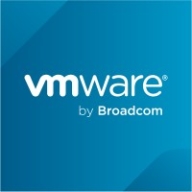

VMware Carbon Black Endpoint and Norton Small Business are two prominent endpoint security solutions. Users are generally happier with the features provided by VMware Carbon Black Endpoint, but Norton Small Business is appealing due to its better pricing and ROI value.
Features: VMware Carbon Black Endpoint offers advanced threat detection capabilities, comprehensive logging, and strong real-time visibility and incident response. Norton Small Business is valued for its ease of use, robust virus protection, and suitability for small businesses.
Room for Improvement: VMware Carbon Black Endpoint can be resource-intensive and has a steep learning curve for new administrators. It also requires fine-tuning for performance optimization. Norton Small Business needs more advanced customization options, improved integration with other business tools, and enhancements in flexibility and extensibility.
Ease of Deployment and Customer Service: VMware Carbon Black Endpoint has a detailed setup process requiring knowledgeable IT personnel for optimal deployment, with positive customer support experiences. Norton Small Business is straightforward to deploy, quick to implement, and has effective customer service.
Pricing and ROI: VMware Carbon Black Endpoint has higher setup costs but delivers significant ROI through enhanced security measures. Norton Small Business is more affordable upfront and provides good value for small enterprises seeking basic protection.
| Product | Market Share (%) |
|---|---|
| Norton Small Business | 2.2% |
| VMware Carbon Black Endpoint | 1.8% |
| Other | 96.0% |


| Company Size | Count |
|---|---|
| Small Business | 9 |
| Large Enterprise | 2 |
| Company Size | Count |
|---|---|
| Small Business | 31 |
| Midsize Enterprise | 9 |
| Large Enterprise | 30 |
VMware Carbon Black Endpoint enhances endpoint security with its robust EDR, threat detection, and live response features. The cloud-based architecture supports remote management and easy setup while behavioral monitoring and dynamic grouping minimize security risks.
VMware Carbon Black Endpoint is designed for those seeking comprehensive endpoint protection. With its cloud-based deployment, organizations experience streamlined remote control and simplified rollout processes. Its behavioral monitoring, incident response capabilities, and firewall integration deliver advanced security measures. Although it addresses many security challenges, areas like manual alert management, on-demand scanning, and integration with systems like AlienVault USM require refinement. Improved UI, EDR components, and flexible pricing models would enhance user satisfaction. On-premise deployment infrastructure and compatibility issues with some operating systems need attention. Enhanced reporting, container security, and multi-tenancy support are also essential for fulfilling industry needs. AI-driven analysis and threat isolation empower companies by fostering proactive management.
What are the key features of VMware Carbon Black Endpoint?
What benefits should users look for when evaluating VMware Carbon Black Endpoint?
VMware Carbon Black Endpoint finds extensive application in industries focused on stringent security requirements. Managed security service providers leverage its capabilities to deliver comprehensive protection to multiple clients worldwide. Organizations use it primarily for antivirus protection and incident management, integrating it with their existing security frameworks to strengthen endpoint visibility and real-time threat prevention. Its advanced detection and application control features make it a preferred choice in industries that prioritize robust security measures. However, it requires improvements in terms of system compatibility and customization flexibility to better serve diverse industry environments.
We monitor all Endpoint Protection Platform (EPP) reviews to prevent fraudulent reviews and keep review quality high. We do not post reviews by company employees or direct competitors. We validate each review for authenticity via cross-reference with LinkedIn, and personal follow-up with the reviewer when necessary.